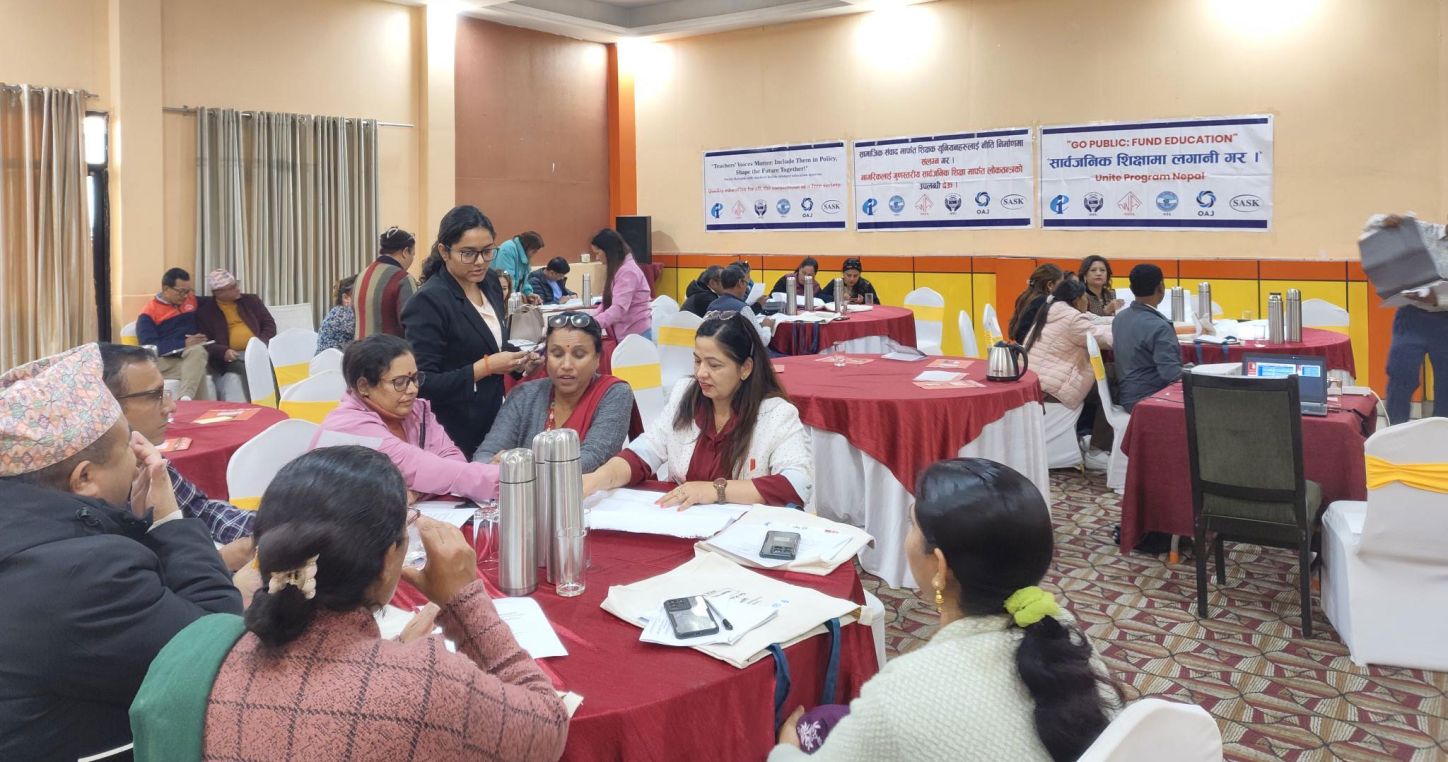Stolen Childhoods: Forced Marriages Haunt Palestinian Girls – Algemeiner.com

Report on Child Marriage in Palestine and its Conflict with Sustainable Development Goals
1. Executive Summary
An investigation by the official Palestinian Authority (PA) daily, Al-Hayat Al-Jadida, reveals the persistent practice of child marriage, a direct contravention of multiple Sustainable Development Goals (SDGs). Despite legislation setting the marriage age at 18, legal loopholes for “exceptional cases” are systemically used to circumvent the law. This practice severely impacts progress on SDG 5 (Gender Equality), SDG 4 (Quality Education), SDG 3 (Good Health and Well-being), and SDG 16 (Peace, Justice and Strong Institutions).
2. Legal Framework and Institutional Challenges: A Failure to Uphold SDG 16
The report highlights a critical gap between law and practice, undermining SDG 16, which calls for effective, accountable, and inclusive institutions at all levels.
- Legislation: PA Decision with Legislative Force No. 21 of 2019 established the legal age of marriage at 18 for both males and females.
- Systemic Loophole: Paragraph 2 of the law allows for exceptions in “special cases” where marriage is deemed a “necessity” for the “interests of both parties,” subject to judicial approval from the supreme Shari’ah judge or other religious authorities.
- Institutional Failure: According to the Independent Commission for Human Rights, these exceptions have become the rule, nullifying the law’s intent. The Shari’ah judicial system reportedly refrained from providing an official response or data on the matter, indicating a lack of transparency and accountability.
3. Violation of Gender Equality and Empowerment (SDG 5)
The practice of marrying female minors is a profound violation of SDG 5, which aims to eliminate all harmful practices, such as child, early, and forced marriage (Target 5.3).
Key Statistics and Findings:
- Between 1995-2019, approximately 200,000 marriages were registered in Palestine; 95% of these involved girls under the age of 18.
- In the 2020-2021 period, following the new legislation, over 10,000 marriages of individuals below the legal age of 18 were registered, demonstrating the ineffectiveness of the current legal framework.
Case Study Analysis:
- A 14-year-old girl, identified as R.K., was forcibly married, a direct violation of her rights.
- She experienced sustained domestic violence, including being beaten with a sharp object. This contravenes SDG Target 5.2 to eliminate all forms of violence against all women and girls.
- Community mechanisms (“clan’s dignitaries”) failed to protect her, instead returning her to her abuser.
- The marriage ended in divorce without alimony or support, exacerbating her economic vulnerability and undermining SDG Target 5.A concerning women’s rights to economic resources.
4. Socio-Economic Drivers and Impacts on SDGs 1, 3, and 4
The report identifies several socio-economic factors driving child marriage, which in turn obstruct progress on goals related to poverty, health, and education.
Identified Drivers:
- Social Heritage (SDG 5): Marrying girls early is viewed as a means to protect them and preserve the family’s “good name.”
- Poverty (SDG 1): Marriage is used as a tool to ease the financial burden on low-income families, perpetuating a cycle of poverty for the child bride.
- Perceived Marriageability: A belief that girls have better marriage prospects at a younger age.
Impact on Human Development:
- Denial of Education (SDG 4): Victims like R.K. are robbed of their childhood and “prevented from getting an education,” denying them the right to quality education and lifelong learning opportunities.
- Poor Health Outcomes (SDG 3): The report links child marriage to severe physical abuse and the psychological trauma associated with domestic violence, directly impacting the health and well-being of young girls.
5. Recommendations for Alignment with SDG Commitments
Experts cited in the report propose legal and policy reforms to align Palestinian practices with international standards and the 2030 Agenda for Sustainable Development.
- Strengthen Legal Protections (SDG 16): The Ministry of Women’s Affairs Legal Advisor, Souna Nassar, recommends setting a minimum age of at least 17 even for exceptional cases to tighten the existing loophole.
- Eliminate Impunity (SDG 5 & 16): A key recommendation is to prohibit exceptions in cases of sexual assault. This reinforces the repeal of Article 308 of the Penal Code, which previously allowed a perpetrator to escape punishment by marrying the victim.
- Enhance Monitoring and Accountability (SDG 16): There is a clear need for effective supervision and consistent enforcement of the law to ensure exceptions do not remain the norm, thereby building more effective and accountable institutions.
Analysis of Sustainable Development Goals in the Article
1. Which SDGs are addressed or connected to the issues highlighted in the article?
The article on forced child marriages in Palestine directly addresses and connects to several Sustainable Development Goals (SDGs). The analysis reveals the following relevant SDGs:
- SDG 5: Gender Equality: This is the most prominent SDG in the article. The text focuses on the forced marriage of young girls, a harmful practice that constitutes gender-based discrimination and violence. It highlights how girls are disproportionately affected, their childhoods are “stolen,” and they are subjected to violence by their older husbands, as seen in the case of R.K.
- SDG 4: Quality Education: The article explicitly links child marriage to a lack of educational opportunities. The story of R.K. notes that the marriage “prevented her from getting an education,” directly connecting this harmful practice to the denial of the right to complete schooling.
- SDG 16: Peace, Justice and Strong Institutions: The article extensively discusses the failures and loopholes within the legal system. It points out that “Decision with Legislative Force No. 21 of 2019,” which set the marriage age at 18, is being undermined by “exceptional cases.” This points to weak institutions, a lack of rule of law, and a failure to protect the rights of children and women. The violence R.K. endured and her inability to get justice or support also fall under this goal.
- SDG 1: No Poverty: The article implies a connection to poverty by stating that one reason for early marriage is to “ease the financial burden on the family, especially in low-income families.” This links the practice of child marriage to economic vulnerability.
2. What specific targets under those SDGs can be identified based on the article’s content?
Based on the issues discussed, several specific SDG targets can be identified:
- Target 5.3: Eliminate all harmful practices, such as child, early and forced marriage and female genital mutilation.
- The entire article is centered on this target, describing the “Palestinian custom of forced marriages of young Palestinian girls to much older men” and citing statistics on the prevalence of marriage for girls under 18.
- Target 5.2: Eliminate all forms of violence against all women and girls in the public and private spheres, including trafficking and sexual and other types of exploitation.
- This target is relevant due to the testimony of R.K., who was “forcibly married” and whose husband was “always violent towards me.” The article also mentions the need to prohibit exceptions in cases of sexual assault, referencing a law that previously allowed perpetrators to escape punishment by marrying their victims.
- Target 4.1: By 2030, ensure that all girls and boys complete free, equitable and quality primary and secondary education leading to relevant and effective learning outcomes.
- The article supports this target by highlighting its contravention. R.K. was arranging her books for a school exam when she was told a groom was coming, and she explicitly states that the marriage “prevented her from getting an education.”
- Target 16.2: End abuse, exploitation, trafficking and all forms of violence against and torture of children.
- Forced child marriage is a form of child abuse and violence. The article’s focus on marrying off “female minors” and the story of a 14-year-old bride directly relate to ending violence and exploitation of children.
- Target 16.3: Promote the rule of law at the national and international levels and ensure equal access to justice for all.
- The article details how a law (Decision No. 21 of 2019) is being circumvented through legal loopholes, as “exceptional cases have become the rule.” R.K.’s experience of receiving a divorce “without alimony or support” after suffering for two years demonstrates a lack of equal access to justice.
3. Are there any indicators mentioned or implied in the article that can be used to measure progress towards the identified targets?
The article provides both quantitative and qualitative data that can serve as indicators for measuring progress.
- Indicator for Target 5.3: The article provides direct statistics that can be used to measure progress on Indicator 5.3.1 (Proportion of women aged 20–24 years who were married or in a union before age 18).
- Quantitative Data: “Between 1995-2019, about 200,000 marriages were registered in Palestine, 95% of which were of girls under the age of 18.”
- Quantitative Data: “According to initial estimates and statistics from 2020-2021, more than 10,000 cases of marriages below the legal age, 18 years, were registered.”
- Indicator for Target 5.2: The article provides qualitative evidence of violence against women and mentions legal frameworks related to it, which aligns with Indicator 5.2.1 (Proportion of ever-partnered women and girls subjected to violence).
- Qualitative Data: The testimony of R.K. about her husband being “always violent” and being “beaten with a sharp object.”
- Legal Framework Indicator: The mention of the repeal of “Article 308 of the Penal Code, which allowed the perpetrator to escape punishment by marrying the victim.”
- Indicator for Target 16.3: The article implies indicators related to the effectiveness of the justice system.
- Qualitative Data: The statement that “exceptional cases have become the rule that is relied upon to circumvent the law” serves as an indicator of the weakness of the rule of law.
- Qualitative Data: The fact that the “Shari’ah judicial system refrained from providing any response” indicates a lack of transparency and accountability in judicial institutions.
4. Summary of SDGs, Targets, and Indicators
| SDGs | Targets | Indicators Identified in the Article |
|---|---|---|
| SDG 5: Gender Equality | Target 5.3: Eliminate all harmful practices, such as child, early and forced marriage. | – Statistic: 95% of 200,000 registered marriages between 1995-2019 were of girls under 18. – Statistic: Over 10,000 cases of marriage below the legal age were registered in 2020-2021. |
| Target 5.2: Eliminate all forms of violence against all women and girls. | – Anecdotal evidence of physical violence: R.K. was “always” subjected to violence and “beaten with a sharp object.” – Legal framework indicator: Mention of the repeal of Article 308 of the Penal Code. |
|
| SDG 4: Quality Education | Target 4.1: Ensure that all girls and boys complete free, equitable and quality primary and secondary education. | – Qualitative statement: R.K. believes that the early marriage “prevented her from getting an education.” |
| SDG 16: Peace, Justice and Strong Institutions | Target 16.2: End abuse, exploitation… and all forms of violence against… children. | – The central issue of marrying off “female minors,” with a specific case of a girl married at 14. |
| Target 16.3: Promote the rule of law… and ensure equal access to justice for all. | – Evidence of legal loopholes: “Exceptional cases” in the law are used to “circumvent” the minimum marriage age. – Lack of justice: R.K. received a divorce “without alimony or support.” – Lack of institutional accountability: The “Shari’ah judicial system refrained from providing any response.” |
|
| SDG 1: No Poverty | Target 1.3: Implement nationally appropriate social protection systems and measures for all. | – Implied driver of child marriage: A means to “ease the financial burden on the family, especially in low-income families.” |
Source: algemeiner.com

What is Your Reaction?
 Like
0
Like
0
 Dislike
0
Dislike
0
 Love
0
Love
0
 Funny
0
Funny
0
 Angry
0
Angry
0
 Sad
0
Sad
0
 Wow
0
Wow
0












































































